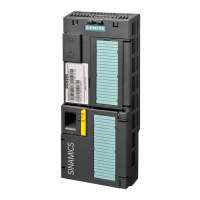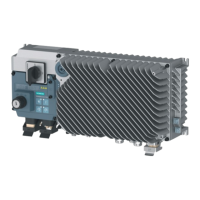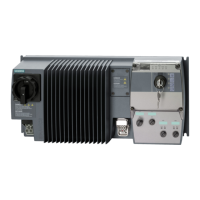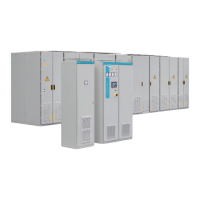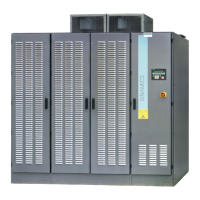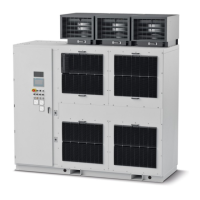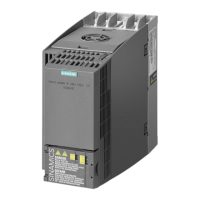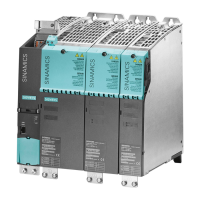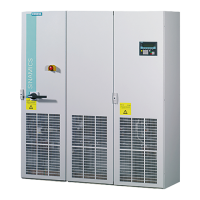Functions
7.9 Technological functions
Inverter with CU240B-2 and CU240E-2 Control Units
190 Operating Instructions, 07/2010, FW 4.3.2, A5E02299792B AA
7.9.1.2 DC braking
DC braking is typically used for applications in which the motor is normally operated at a
constant speed and is only braked down to standstill in longer time intervals, e.g.:
● Centrifuges
● Saws
● Grinding machines
● Conveyor belts
Principle of operation
You can select the DC braking in two different ways:
1. Using any binary signal, e.g. a digital input.
2. When a fault occurs.
'&EUDNLQJDFWLYH
6SHHG
'&EUDNLQJ
VHOHFWHG
'&EUDNLQJDFWLYH
6SHHG
)DXOW
6HOHFWLRQYLD%,&26LJQDO 6HOHFWLRQYLDIDXOW
2))
2))
S
U
U
W
W
W
2))
S
S
U
U
S
W
W
W
Figure 7-8 Principle of operation of the DC braking
Selection via BICO Signal Selection via fault
1. --- Initially, the inverter brakes the motor with the
ramp-down time of the ramp-function
generator (OFF1 ramp-down time) until an
adjustable speed threshold is reached.
2. The inverter temporarily issues an internal OFF2
command.
If the motor speed falls below this threshold,
the inverter issues a temporary internal OFF2
command.
3. If the motor is demagnetized (p0347 has expired), the inverter injects a direct current into the
motor. The magnitude of the DC current can be adjusted using p1230.
4. Direct current flows through the motor until DC
braking has been deactivated.
The duration of DC braking can be adjusted
using p1233.

